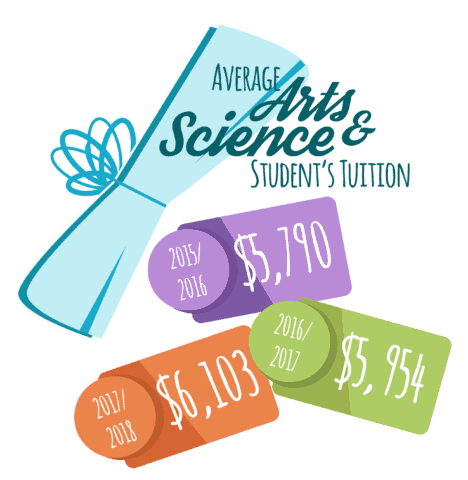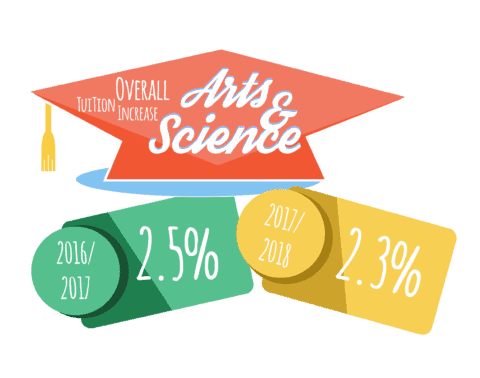The University of Saskatchewan has released tuition rates for the 2017-18 year, following the Board of Governor’s decision in December, creating new challenges for students in both undergraduate and graduate programs.
Tuition each year is determined after consultation with all colleges and it reflects the annual budget of the government of Saskatchewan. Tuition this year is expected to rise between zero and five per cent across undergraduate and graduate programs. The College of Arts and Science, which currently enrolls about 45 per cent of U of S students, is expected to see a raise in tuition of 2.5 per cent, compared to last year’s 2.8 per cent.
Emmanauel Barker, U of S Students’ Union vice-president operations and finance, explains that the upcoming increases will be matched with efforts by the USSU to prevent further impediments on students.
“The USSU has reached out to media, the university, University Student Council and the Minister of Advanced Education regarding our position of post-secondary, and there are issues that should be addressed to keep tuition affordable for students in Saskatchewan,” Barker said.
These issues include asking the government of Saskatchewan to commit to minimum funding increases, as projected by the Saskatchewan Consumer Price Index  put forward yearly by Statistics Canada, as well as implementing a system by which students can project the full costs of specific degrees on a yearly basis.
put forward yearly by Statistics Canada, as well as implementing a system by which students can project the full costs of specific degrees on a yearly basis.
The impending average increase in tuition of 2.3 per cent is comparable to the 2016-17 change of 2.5 per cent. Students in the Colleges of Nutrition, Law and Education can expect the highest increases in tuition costs, with nutrition students facing a five per cent increase and both law and education students facing three per cent increases.
According to Barker, the continued increase of tuition results from the decisions of the provincial government.
“Everything comes down to how much the province is investing in post-secondary,” Barker said.
Despite this road block, Barker says that efforts are underway to minimize the strain this will put on students.
“Tuition increases are lower this year than last year by 0.2 per cent, despite having a much worse economy and a relatively smaller provincial contribution,” Barker said.
He explains that, regarding tuition, the Board of Governors is the ultimate deciding power.
“[They] make the decision to approve tuition rates. The full weight of every final decision rests on the Board of Governors,” Barker said.
The Board of Governors consists of the chancellor — newly appointed Roy Romanow — university president Peter Stoicheff, five members appointed by the Lieutenant-Governor-in-Council, two Senate-elected members, one student — USSU president Kehan Fu — and one faculty member. Tuition is first evaluated by each individual college following yearly provincial budget announcements.
“Colleges themselves make their recommendations for tuition. The colleges do not usually change their recommendations. However, the provincial budget can  change drastically, as it did this year,” Barker said.
change drastically, as it did this year,” Barker said.
Recent efforts by some students to further unionize the U of S under the Canadian Federation of Students has also impacted the tuition conversation, although the USSU was not involved in this initiative. The CFS, a national organization that aims to ease the strains put on students in Canada by promoting universal access to post-secondary education, has been facing accusations of mismanaging funds since as early as 2013.
Barker and the USSU do not believe a partnership with the CFS would be beneficial to the university and have been working to distance themselves from the national group.
“We at the USSU believe that the CFS does not act in the interest of students, and as an organization, we are not affiliated with them,” he said.
Barker emphasizes that deciding parties are actively trying not to put a disproportionate burden on students, even though the institution is receiving less support than last year. He reminds students that there is always a place for them to speak out against these changes at USSU council meetings or one-on-one with the executive.
“As always, if students have an interest in getting involved with current issues or want to make their voices heard, the USSU is here to provide support and information.”
—
Emily Migchels
Graphics: Lesia Karalash / Graphics Editor